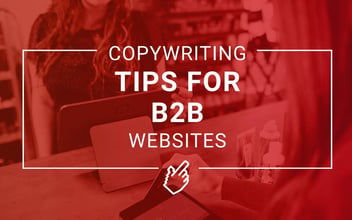Email is one of the most effective ways to find and nurture prospects, and it is also helpful in turning existing customers into repeat and loyal buyers. However, not all email campaigns are high-quality, and often the email subject headline can turn people away. Learning how to write an inviting email subject headline can significantly increase your conversions and sales from email campaigns. The headline acts as a gatekeeper for the email and is the first thing that recipients see in their inboxes. While great email copy is important, if the recipient doesn't like the headline, they will never open the email. Here are five best practices to write email subject headlines that will get your email opened.
1. Be Ultra Specific
The point of an email is to bring your attention to a matter that interests your reader. A vague or wishy-washy headline will not catch their interest enough to induce them to learn more. Therefore, be upfront and to the point as to why you are emailing. Realize that your recipients may get hundreds of emails each day. The fact that they are still on your email list is significant, because they do want to keep in touch with you. Your headline can be a statement, but can also be a question which can give the reader incentive to open and answer it. Tell your readers what is inside the email.
2. Personalize It
With all of the technology available today, it does not take much effort to personalize your emails. As a matter of fact, Campaign Monitor, a top provider of email marketing software, recommends personalization as one of their top tips. Even adding just a first name can make an email sound more personal, and most email systems will do this automatically for you. The more in-depth relationship you have with a prospect or customer, the better you can customize each email for them through segmentation. If you are reaching out to customers in several locations, you can customize emails with localization techniques. Or you can target customers by interests or other demographics. For service companies, reminders of time-related service needs will also be effective such as bi-yearly oil changes for vehicles.
3. Build Excitement
For some campaigns, autoresponders work well to add excitement. You can nurture prospects and hone your list to those who are truly interested and ready to buy. Drip campaigns work well with autoresponders, or you can set up an email series that gives helpful information at a customer opt-in request.
4. Test Subject Lines
Like any campaign, you will find out your most effective subject lines by testing them on real prospects and customers. Don't assume that you know best. Let the actual customers tell you what works by their responses to email lines. Variables such as length, capitalization, brand recognition and words used are just a few of the things that you can test for effectiveness.
5. Create Urgency
In emails where it is appropriate you can create urgency through several ways. One of the most common is by offering a discount or sale that has a limited time value. Another is by offering a reward to a customer who responds within a specific amount of time. Some emails have a deadline due to time of year or upcoming holiday or event. Urgency will induce customers to act more quickly or decisively. However, make sure that the urgency is genuine, because no one likes getting fooled. False urgency will likely backfire causing some recipients to remove themselves from your list.
If you enjoyed this advice, you may want to check out Sleeknote's list of best email subject lines or Campaign Monitor's email marketing tips as well.





